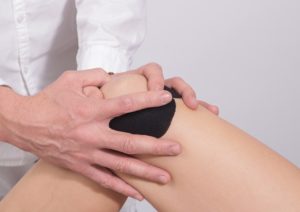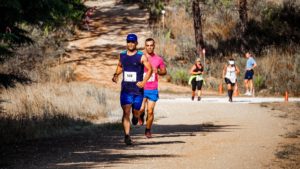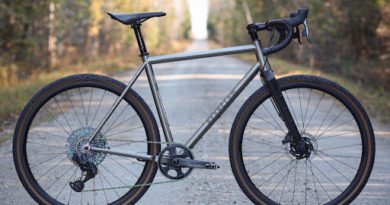Last modified on December 3rd, 2020 at 1:44 am
Common Problems That Runners Encounter: Tips on How to Avoid Them
Running is a great way to stay physically fit. The exercise works the leg muscles, builds endurance, and improves cardiovascular health. Runners also get to enjoy being outside, which helps with psychological health. Unfortunately, exercise can also cause problems. Fortunately, there are steps runners can take to avoid them.
Runner’s Knee
One of the most common problem that runners experience is runner’s knee, which is also called patellofemoral pain syndrome. According to a study published in the British Journal of General Practice, this problem involves knee pain that is bothered by running up and down hills. It is also bothered by activities like squatting and sitting with the knee flexed. The problem with runner’s knee is that the physical location of the pain cannot be identified in one location.
Fortunately, there are therapies and treatments for runner’s knee. Once it has progressed, surgical treatments include lateral retinacular release or patellar debridement. Non-invasive treatments include anti-inflammatory medications and knee braces. To avoid getting to the point where surgery is necessary, the BJGP study recommended that runners wear orthotic devices or use McConnell Taping to rotate and tilt the patella to improve its tracking. Runners can also avoid developing runner’s knee if they strengthen and stretch the quadriceps muscles.

Muscle Strain
Muscle strains, especially in the hamstring muscles, are incredibly common injuries for athletes. The hamstring is responsible for all stages of the gait, so it is easy to injure the muscle. According to a study published in The Journal of the American Academy of Orthopaedic Surgeons, fortunately for runners, hamstring injuries heal quickly unless the hamstring is injured again. Treatment for muscle strain involves the “RICE” method of rest, ice, compression, and elevation as well as anti-inflammatory medication. Another treatment for the muscle strain is by taking peptide specifically tb-500. Tb-500 is the synthetic version of the naturally-occurring peptide Thymosin Beta-4, which is 43 amino acids long. You may also want to know tb-500 side effects for your proper guidance. Gentle stretching and strengthening with isometrics helps to get the muscles ready for running again.
The Strength and Conditioning Journal published recommendations for preventing hamstring strains. The best exercises are those that include “high forces, maximal muscle elongation, high velocities, multiple joint movements, closed-chain exercises, unilateral exercises, and cost-effective and easily implemented exercises.” Researchers recommend exercises like box drops, lunge drops, forward pulls, and deadlifts. These strengthen the quads and hamstrings. The runner should work with a trainer when learning these exercises.
Stress Fractures
Fortunately, stress fractures are not too common for athletes. According to Sports Health, researchers found that stress fractures do happen to older athletes who have been involved in their sports for a longer amount of time. With repetitive loading, stress reactions develop into stress fractures, especially with runners and people involved in jumping sports. The most common stress fractures occur in the lower legs (tibia), ankles, and feet.
Researchers shared techniques that can help prevent stress fractures. They include taking calcium and vitamin D supplements, hormone replacements, and bisphosphonates. Researchers also found that using bone stimulators helped prevent stress fractures, too.
Shin Splints

Runners frequently experience shin splints, which is technically known as medial tibial stress syndrome. According to research in the Journal of Athletic Training, shin splints are a common injury for runners. Risk factors include
- Foot Pronation
- Strength in the muscles around the Achilles tendon
- Awkward positions of the foot
- Calcium deficiencies
- Hard running surfaces
- Inclined running surfaces
- Poor quality shoes
- Previous injuries
All of these factors are preventable, yet runners still get shin splints. Preventing these risk factors can help prevent shin splints. Researchers have also found that using shock-absorbent and pronation-control insoles are helpful. While graduated running programs do help prevent shin splints, stretching the lower leg does not. Runners should replace their shoes after putting 300 to 600 miles on them. If runners use hard surfaces, carry extra weight, and run in certain styles, they should replace their shoes more frequently than runners who are not overweight and do not use run on hard surfaces.
To avoid shin splints, graduated running program is helpful. These are developmental programs where runners do not abruptly increase their duration or intensity. They should stay away from hill training or a drastic change in running surface. Runners should make subtle changes to their programs and if their shins begin to hurt, they should reduce the duration and intensity of their runs.
Iliotibial Band (IT Band) Syndrome
IT Band Syndrome is a problem that is misunderstood but happens to an average of 10% of runners. According to a study published in the International Journal of Sports Physical Therapy, it is considered an overuse injury that can lead to hip, thigh, and knee pain. This study looked at recreational athletes and found a variety of treatments that had a multitude of responses. People with IT Band Syndrome often rely on physical therapy—one of the services that Better Health Chiropractic in Anchorage and Juneau offers—which has shown to be helpful in reducing the pain.
To avoid IT Band Syndrome, runners need to look at their training routine. Researchers found that a “multifaceted treatment approach” was effective. The treatments included stretching the lower back and legs. Runners also need to strengthen their core muscles and hip muscles. Runners should pay attention to their form and their shoes. Researchers found that shoes with 200 miles or more can change a runner’s gait and they recommended shoes that included motion control features rather than cushioning features. Researchers also recommended running on surfaces like roads, tracks, and grass because those surfaces provide shock absorption. They recommended to never run on cement.

All of these injuries are preventable, but they require runners to pay attention to their form. They also should run only on surfaces that have some shock absorption. Cement clearly can do damage to runner’s legs and backs. It is important that runners stretch and strengthen their lower extremities as well as their core muscles to avoid unwanted injuries. They should also pay close attention to their shoes as the miles build up and replace them after 200 miles or more.

Dr. Brent Wells, D.C. founded Better Health Chiropractic & Physical Rehab in Alaska in 1998 and has been a chiropractor for over 20 years. His practice has treated thousands of patients from different health problems using various services designed to help give you long-lasting relief.
Dr. Wells is also the author of over 700 online health articles that have been featured on sites such as Dr. Axe and Lifehack. He is a proud member of the American Chiropractic Association and the American Academy of Spine Physicians. And he continues his education to remain active and updated in all studies related to neurology, physical rehab, biomechanics, spine conditions, brain injury trauma, and more.





